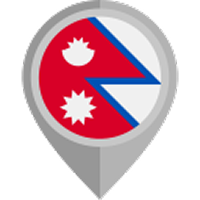Nepal vision | 02/11/2023
The unforgettable adventure in the breathtaking landscapes of Nepal – where every step unveils a new story of nature's beauty. But before initiating your journey, do you have to train for a trek in Nepal?
Nepal is in the heart of the Himalayas and is a paradise for trekkers. Its diverse terrain offers a mix of lush forests, snow-capped peaks, and unique cultural experiences.
Trekking and hiking in Nepal are not just physical endeavors but journeys of self-discovery. The popularity of Nepal as a trekking destination stems from its world-renowned trails.
It includes the Everest Base Camp and Annapurna Circuit, attracting adventurers seeking both challenge and natural beauty.

Preparatory Steps Before the Trek
Before embarking on a trek in Nepal, it's crucial to undertake several preparatory steps. Nepal's geography and climate are essential to anticipate the diverse terrain and weather conditions.
Researching and selecting the proper trek aligned with your fitness level ensures a safe and enjoyable journey. Additionally, obtaining necessary permits and adhering to legal requirements is imperative to comply with local regulations.
Packing the right essentials and gear specific to Nepal trekking, including sturdy footwear, appropriate clothing for varying climates, essential medications, and camping equipment, is vital for a comfortable and prepared trekking experience.
These preparatory measures serve as a foundation for a successful and safe trek in the magnificent landscapes of Nepal.

Physical Training for Nepal Trekking
You can embark on a trek in the awe-inspiring landscapes of Nepal. But it demands not just a yearning for adventure but also a body prepared for the challenges ahead.
Physical training for Nepal trekking is not merely about fitness; it’s the vital preparation that bridges the gap between aspiration and accomplishment.
During soaring peaks and verdant valleys, one must traverse terrains that test endurance and strength.
Cardiovascular Conditioning for Endurance
- Engage in aerobic exercises such as hiking, running, cycling, or swimming to boost endurance.
- Aim for at least 30 minutes of moderate-intensity cardio, gradually increasing duration and intensity.
Strength Building for Leg Muscles and Core Stability
- Focus on exercises like squats, lunges, step-ups, and calf raises to strengthen leg muscles.
- Incorporate core workouts, including planks, Russian twists, and yoga, to enhance stability and balance.
Altitude Adjustment Training
- Simulate altitude conditions, if possible, using altitude masks or controlled environments.
- Train in higher altitudes, if accessible, to acclimate the body to reduced oxygen levels.
Training Duration and Frequency Recommendations
- Train consistently for 3-6 months before the trek, gradually increasing intensity.
- Aim for a balanced routine, including 3-5 days of cardiovascular workouts and 2-3 days of weekly strength training.
- Gradually extend workout durations and intensities as the trek date approaches, preparing the body for the demands of high-altitude trekking.

Mental Preparation
Trekking in Nepal's high-altitude landscapes demands not just physical endurance but also mental resilience. Understanding and confronting the challenges posed by high-altitude trekking are essential.
Coping strategies to navigate both physical and mental hurdles are crucial. Mental preparedness involves developing strategies to overcome obstacles.
It ensures a positive mindset amid the demanding terrain and building the stamina needed for the arduous journey.
Acclimatization and Health Precautions
Acclimatization stands as a pivotal factor in preventing altitude-related health issues. Recognizing its importance in adjusting to lower oxygen levels is vital to mitigate the risks of altitude sickness.
Additionally, prioritizing hydration and nutrition tailored to the unique demands of Nepal trekking is essential for sustained energy and health.
Equipping oneself with basic first aid training and knowledge of common medical concerns. At the same time, trekking in Nepal helps ensure safety and prompt response to potential health issues.

On-Ground Preparation in Nepal
Preparing for a trek in Nepal goes beyond physical training and gear; it involves on-ground arrangements critical for a successful and safe expedition.
As you step foot in this enchanting land of the Himalayas, it ensures meticulous on-ground preparation becomes imperative.
These preparations in Nepal will lay the foundation for an unforgettable journey through stunning landscapes and diverse cultures.
Arriving in Nepal: transportation and necessary arrangements
Upon arrival in Nepal, organize transportation from the airport to your initial destination. Ensure accommodations and any additional arrangements, such as travel permits or guides, are in place.
Briefing with local guides and understanding local customs
Meet with local guides to discuss the trek, route details, safety measures, and cultural considerations. Gain insights into local customs, traditions, and etiquette to engage with the communities along the tour respectfully.
Final check of gear and supplies before the trek
Conduct a thorough check of all trekking gear, ensuring everything necessary is packed. Verify the completeness of supplies and gear, including proper clothing, first aid kits, water purification tools, and essential trek-specific equipment.

During the Trek
Maintain a Consistent Pace
- Pace yourself to conserve energy for the entire trek.
- Avoid overexertion, especially at higher altitudes.
Stay Hydrated and Nourished
- Drink plenty of water to prevent dehydration at high altitudes.
- Consume nutritious, high-energy snacks or meals to sustain your endurance.
Adhere to Safety Precautions
- Follow safety guidelines provided by guides or local experts.
- Stay on marked trails and pay attention to weather conditions.
Interact with Local Communities
- Embrace the culture and engage with local communities.
- Respect local customs and traditions.
Manage Altitude Changes
- Be aware of altitude-related symptoms and inform guides if feeling unwell.
- Take necessary breaks and acclimatize as required.
Embrace the Natural Beauty
- Take time to appreciate the stunning landscapes and natural beauty.
- Capture moments through photography and keep memories.
Support Fellow Trekkers
- Offer help or support to others in the trekking group if needed.
- Foster a sense of teamwork and camaraderie among fellow trekkers.
Be Mindful of Waste and Environment
- Dispose of waste responsibly, following 'leave no trace' principles.
- Respect and preserve the environment for future trekkers.

To wrap up, embarking on a trek in Nepal is not just a physical journey but a profound exploration of nature's wonders and personal resilience. You should prepare adequately, respecting local customs and embracing the journey's challenges and beauty.
With the Nepal Vision trek, one can create unforgettable memories while discovering the majestic landscapes and cultural richness of Nepal's treks.
FAQS
- Can beginners trek Nepal?
Yes, beginners can trek in Nepal, but choosing a suitable route and adequate preparation are key.
- How do I make myself fit for trekking?
Engage in regular cardio, strength training, and altitude simulation exercises for at least 3-6 months before the trek.
- How do I look good in trekking?
Wear comfortable, moisture-wicking clothing and suitable trekking gear that fits well.
- What's the best time for trekking in Nepal?
The best time is during the dry seasons, typically autumn (September to November) and spring (March to May).
- Do I need to get travel insurance for Nepal trekking?
Yes, travel insurance is highly recommended to cover emergencies and unforeseen circumstances.
- How can I prevent altitude sickness during the trek?
Acclimatize gradually, stay well-hydrated and follow your guide's advice.
- What's the average duration of a Nepal trek?
It varies, but most treks last between 7 to 21 days.
- What should I do if I encounter wildlife on the trail?
Keep a safe distance, avoid provoking animals, and stay calm; your guide will provide guidance.









